Aperçu de la poudre de BNi-7
Si vous avez fait des recherches sur les alliages de brasage ou les matériaux pour les applications à haute température, vous avez probablement rencontré des alliages de brasage ou des matériaux pour les applications à haute température Poudre de BNi-7. Il s'agit d'un alliage de brasage spécialisé à base de nickel, largement utilisé dans diverses industries pour son excellente résistance à la corrosion et à l'oxydation, ainsi que pour sa capacité à former des joints solides et fiables. Mais qu'est-ce qui distingue exactement le BNi-7 ? Et pourquoi est-il si populaire dans différents domaines ?
La poudre BNi-7 est un mélange de plusieurs éléments, dont le nickel, le phosphore et le bore. Ces éléments se combinent pour créer un alliage de brasage avec un point de fusion bas, ce qui le rend idéal pour le brasage de précision dans des environnements délicats et à haute température. Que vous travailliez sur des composants aérospatiaux ou des moteurs à haute performance, le BNi-7 constitue une solution polyvalente pour vos besoins de brasage.
Dans ce guide, nous allons nous pencher sur tous les aspects de la poudre de BNi-7, de sa composition chimique à ses applications réelles. Nous y ajouterons quelques comparaisons de produits et mettrons en évidence certains des meilleurs fournisseurs, afin que vous sachiez exactement où vous adresser lorsque vous serez prêt à acheter.
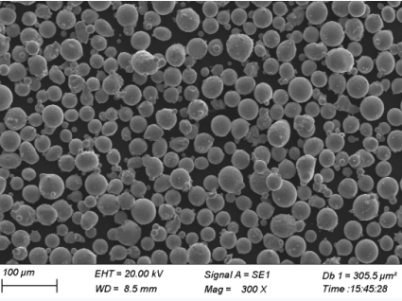
Composition de la poudre de BNi-7
Il est essentiel de comprendre la composition de la poudre de BNi-7 si l'on veut apprécier pleinement ses capacités. La composition de la poudre de ingrédients clés dans la poudre de BNi-7 le nickel, le phosphore et le borequi s'associent pour former un alliage unique aux propriétés recherchées pour les applications industrielles.
Le tableau ci-dessous résume la composition de la poudre de BNi-7.
| Élément | Composition en pourcentage (%) |
|---|---|
| Nickel (Ni) | 92.8-93.8 |
| Phosphore (P) | 6.8-7.2 |
| Bore (B) | 0.03-0.06 |
Nickel (Ni)
Le nickel, l'élément principal, confère au BNi-7 son excellente résistance à la corrosion et à l'oxydation. Il constitue l'épine dorsale de l'alliage, garantissant sa durabilité dans les environnements soumis à de fortes contraintes.
Phosphore (P)
Le phosphore abaisse le point de fusion de l'alliage, ce qui facilite son utilisation dans les opérations de brasage de précision. Il contribue également à la formation de joints solides et ductiles.
Bore (B)
Bien qu'il soit présent en faible quantité, le bore contribue à réduire encore davantage la plage de fusion, ce qui permet à l'alliage de s'écouler plus facilement lorsqu'il est chauffé.
Propriétés et caractéristiques de la poudre de BNi-7
Lors de la sélection d'un alliage de brasage tel que le BNi-7, il est important de tenir compte de ses caractéristiques suivantes propriétés physiques et mécaniques. Ce qui rend le BNi-7 si attrayant pour les ingénieurs, c'est sa combinaison d'un point de fusion bas, résistance élevée à la corrosion et fortes propriétés mécaniques.
Examinons les principales caractéristiques de la poudre BNi-7.
| Propriété | Valeur |
|---|---|
| Point de fusion | 875°C - 890°C |
| Densité | 8.7 g/cm³ |
| Résistance à la corrosion | Excellent dans de nombreux environnements |
| Résistance à l'oxydation | Élevée, même à des températures élevées |
| Caractéristiques du débit | Excellente fluidité au point de fusion |
| Solidité des articulations | Résistance mécanique élevée |
Point de fusion
Le faible point de fusion du BNi-7 (environ 875°C) lui permet d'être utilisé dans les processus de brasage où la précision est essentielle. Ceci est particulièrement utile pour les composants qui ne peuvent pas résister à des températures extrêmement élevées.
Résistance à la corrosion et à l'oxydation
L'une des caractéristiques principales de la poudre de BNi-7 est son résistance supérieure à la corrosion et oxydationmême à des températures élevées. Il est donc idéal pour les environnements où les composants sont exposés à des conditions difficiles, comme l'aérospatiale ou les usines de traitement chimique.
Résistance mécanique
Malgré son faible point de fusion, les joints brasés formés avec le BNi-7 sont incroyablement résistants. Cette résistance mécanique permet aux pièces collées avec le BNi-7 de supporter des contraintes importantes, ce qui le rend adapté aux applications porteuses.
Avantages de la poudre de BNi-7
Maintenant que nous avons examiné la composition et les propriétés de la poudre de BNi-7, explorons ses caractéristiques avantages par rapport à d'autres types d'alliages de brasage. Pourquoi est-il considéré comme supérieur dans tant d'applications ?
| Avantage | Description |
|---|---|
| Faible température de fusion | Plus facile à travailler dans les applications de brasage de précision |
| Résistance à la corrosion et à l'oxydation | Peut être utilisé dans des environnements difficiles sans se dégrader |
| Grande solidité des articulations | Assure des connexions solides et fiables entre les pièces |
| Excellente fluidité | S'écoule bien à la température de brasage, assurant une couverture complète |
| Polyvalence | Peut être utilisé dans diverses industries, notamment l'aérospatiale, l'automobile et l'électronique |
Faible température de fusion
Comparé à d'autres alliages de brasage comme le BNi-5 ou le BNi-2, le BNi-7 présente une température de fusion plus bassece qui facilite l'application dans les pays de l'Union européenne applications délicates ou sensibles à la chaleur. Ceci est particulièrement utile lorsque l'on travaille avec des composants fins ou de petite taille qui pourraient se déformer sous l'effet d'une chaleur excessive.
Résistance à la corrosion
Le BNi-7 est plus performant que beaucoup d'autres alliages dans les environnements sujets à la la corrosion et l'oxydationce qui en fait un choix de premier ordre pour les usines de traitement chimique, les chaudières et les applications aérospatiales où la fiabilité est essentielle.
Résistance mécanique
Lorsque vous avez besoin d'un joint brasé capable de résister aux contraintes, le BNi-7 répond à vos attentes. Son résistance mécanique élevée en fait une meilleure option pour les applications porteuses que les alliages plus tendres et plus faibles.
Comparaison des BNi-7 Poudre avec d'autres alliages de brasage à base de nickel
Lors du choix d'un alliage de brasage, il est utile de comparer le BNi-7 avec d'autres options disponibles pour voir comment il se positionne. Vous trouverez ci-dessous un tableau comparatif entre le BNi-7 et plusieurs autres alliages de brasage à base de nickel, tels que le BNi-1, le BNi-2, le BNi-3, le BNi-4 et le BNi-5.
| alliage | Point de fusion (°C) | Résistance à la corrosion | Solidité des articulations | Meilleures applications |
|---|---|---|---|---|
| BNi-7 | 875-890 | Excellent | Haut | Aérospatiale, traitement chimique |
| BNi-1 | 955-980 | Modéré | Modéré | Brasage polyvalent |
| BNi-2 | 970-995 | Bon | Haut | Applications à haute température |
| BNi-3 | 970-1005 | Excellent | Très élevé | Turbines à gaz, moteurs |
| BNi-4 | 995-1010 | Haut | Très élevé | Aérospatiale, applications soumises à des contraintes élevées |
| BNi-5 | 1050-1070 | Faible | Très élevé | Applications à très haute température |
BNi-7 vs BNi-5
Tandis que BNi-5 a une plus grande résistance des joints, il a également un point de fusion beaucoup plus élevé (1050-1070°C), ce qui le rend plus difficile à utiliser dans les applications de l applications sensibles à la température. En revanche, le point de fusion plus bas du BNi-7 en fait un produit de choix meilleur choix pour le brasage de précision.
BNi-7 vs BNi-2
Par rapport à BNi-2le BNi-7 a une température de fusion plus basse mais conserve une excellente solidité des joints et une bonne résistance à la corrosion. Si votre application nécessite un une charge thermique plus faiblebNi-7 est généralement un meilleure option.
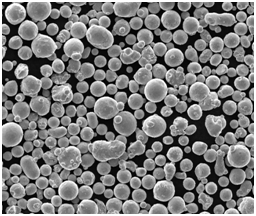
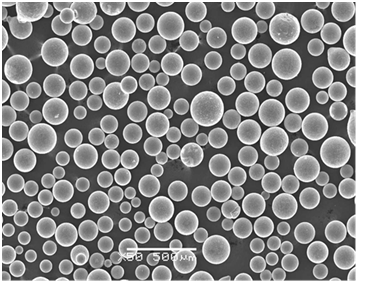
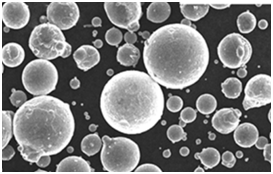

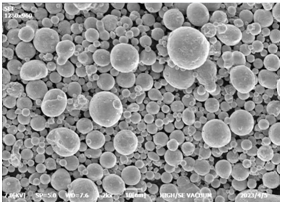

Applications de la poudre de BNi-7
Le BNi-7 est utilisé dans un large éventail d'industries grâce à son mélange unique de propriétés. Examinons quelques-unes des principales propriétés du BNi-7 applications de la poudre de BNi-7 :
| L'industrie | application |
|---|---|
| Aérospatiale | Assemblage d'aubes de turbines, de composants de moteurs, d'échangeurs de chaleur |
| Automobile | Brasage des systèmes d'échappement, des turbocompresseurs et des injecteurs de carburant |
| Traitement chimique | Assemblage de composants exposés à des produits chimiques corrosifs |
| Électronique | Brasage de dissipateurs thermiques, d'écrans RF et d'autres composants délicats |
| Production d'électricité | Brasage de composants pour chaudières, turbines et systèmes de centrales électriques |
Aérospatiale
Dans le cadre de la industrie aérospatialele BNi-7 est couramment utilisé pour le brasage de composants critiques tels que aubes de turbine et échangeurs de chaleuroù une grande solidité et une résistance à la corrosion sont essentielles. Ces composants fonctionnent souvent dans des environnements extrêmes avec des températures élevées et des gaz corrosifs.
Automobile
La poudre de BNi-7 est utilisée dans la l'industrie automobile pour le brasage de composants tels que systèmes d'échappement, turbocompresseurset injecteurs de carburant. La capacité de l'alliage à supporter des températures élevées et à résister à la corrosion le rend idéal pour ces applications applications de haute performance.
Spécifications et normes pour la poudre de BNi-7
La poudre de BNi-7 est disponible
dans différents qualités et dimensionsil est conforme à diverses normes industrielles. Le tableau suivant donne une vue d'ensemble des spécifications que les fabricants et les fournisseurs suivent généralement pour la poudre de BNi-7.
| Spécifications | Description |
|---|---|
| Taille de la poudre | 45-150 µm (plage typique) |
| Normes de conformité | AWS A5.8, AMS 4777, ISO 17672 |
| Taille de l'emballage | Disponible en 1 kg, 5 kg, 10 kg |
| Forme | Poudre, pâte, préformes |
| La pureté | 99%+ teneur en nickel |
Normes
La poudre de BNi-7 doit répondre aux normes fixées par des organismes tels que le Société américaine de soudage (AWS) et Spécifications des matériaux aérospatiaux (AMS) pour garantir une qualité et des performances constantes. A titre d'exemple, AWS A5.8 est une norme largement reconnue pour les métaux d'apport utilisés dans le brasage.
Principaux fournisseurs de poudre de BNi-7 et prix
Il est essentiel de trouver un fournisseur réputé de poudre de BNi-7, surtout lorsque l'on travaille sur des applications critiques. Voici quelques-uns des principaux fournisseurs de poudre de BNi-7, ainsi qu'un guide de prix approximatif.
| Fournisseur | Prix (par kg) | Forme | Commande minimale |
|---|---|---|---|
| Vésuve | $200-$250 | Poudre, pâte | 1 kg |
| Mur Colmonoy | $220-$270 | Poudre | 5 kg |
| Morgan Advanced Materials | $230-$280 | Poudre, préformes | 2 kg |
| Lucas-Milhaupt | $210-$260 | Poudre, préformes | 1 kg |
Tarification
Les prix de la poudre de BNi-7 sont généralement compris entre 200 à 280 dollars par kilogrammele prix peut varier en fonction du fournisseur, de la taille de la commande et de la forme (poudre, pâte ou préformes). Le prix peut fluctuer en fonction de facteurs tels que pureté, taille des poudreset quantité commandée.
Avantages et inconvénients de l'utilisation de la poudre de BNi-7
Comme tout matériau, la poudre de BNi-7 a ses propres caractéristiques avantages et limitations. Voici la répartition des avantages et inconvénients de l'utilisation de la poudre BNi-7 dans les applications de brasage.
| Pour | Cons |
|---|---|
| Faible température de fusion | Coût plus élevé que celui de certaines autres solutions |
| Haute résistance à la corrosion | Limité aux applications non ferreuses |
| Solides propriétés mécaniques | Nécessite un équipement de manutention spécialisé |
| Excellentes caractéristiques de fluidité et d'écoulement | Peut être difficile à obtenir en petites quantités |
Avantages
Le BNi-7 excelle dans résistance à la corrosion, caractéristiques du débitet résistance mécaniqueil est donc adapté aux applications de haute performance où la précision et la durabilité sont essentielles.
Inconvénients
Cependant, il présente certaines limites, notamment un manque d'efficacité prix plus élevé par rapport aux alliages de brasage plus simples comme le BNi-1 ou le BNi-2. Il est également plus difficile de s'approvisionner en petites quantitésce qui peut être un problème pour les amateurs ou les petits magasins.
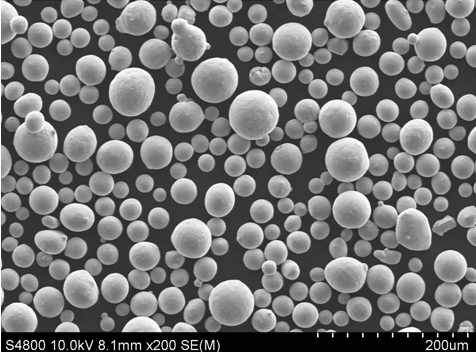
FAQ
Q : Quel est le principal avantage de la poudre de BNi-7 par rapport aux autres alliages de brasage ?
A : La poudre de BNi-7 a une point de fusion bas et haute résistance à la corrosionil est donc idéal pour les applications de haute performance où la précision et la durabilité sont requises.
Q : La poudre BNi-7 peut-elle être utilisée dans les applications automobiles ?
R : Oui, le BNi-7 est couramment utilisé dans l'industrie automobile pour le brasage systèmes d'échappement, injecteurs de carburantet turbocompresseurs.
Q : Quelle est la plage de température de fusion de la poudre de BNi-7 ?
R : La température de fusion de la poudre de BNi-7 est comprise entre 875°C à 890°Cqui est relativement faible par rapport à d'autres alliages de brasage à base de nickel.
Q : La poudre de BNi-7 convient-elle aux applications à haute température ?
R : Oui, le BNi-7 peut résister à des températures élevées et possède d'excellentes propriétés de résistance à la chaleur résistance à l'oxydationil convient donc pour des applications telles que aubes de turbine et échangeurs de chaleur.
Q : Où puis-je acheter de la poudre de BNi-7 ?
R : La poudre de BNi-7 est disponible auprès des principaux fournisseurs tels que Vésuve, Mur Colmonoy, Lucas-Milhauptet Morgan Advanced Materials.
Conclusion
En résumé, Poudre de BNi-7 est un alliage de brasage très polyvalent qui excelle dans les domaines suivants résistance à la corrosion, résistance à l'oxydationet résistance mécaniqueil est donc idéal pour un large éventail d'industries, allant de l'agriculture à l'industrie aérospatiale à automobile. Son point de fusion bas permet un brasage de précision, même dans les applications sensibles à la température.
Qu'il s'agisse de braser aubes de turbine, systèmes d'échappementou échangeurs de chaleurle BNi-7 permet d'obtenir des résultats cohérents et fiables. Bien que son prix soit plus élevé que celui des alliages plus simples, ses propriétés supérieures en font un investissement qui en vaut la peine applications à hautes performances et à fortes contraintes.
Si vous êtes à la recherche de Poudre de BNi-7pour ce faire, n'oubliez pas de prendre en compte des facteurs tels que pureté, taille des poudreset réputation du fournisseur. Avec une multitude d'options disponibles, vous pouvez trouver le produit BNi-7 parfait pour répondre à vos besoins spécifiques.

